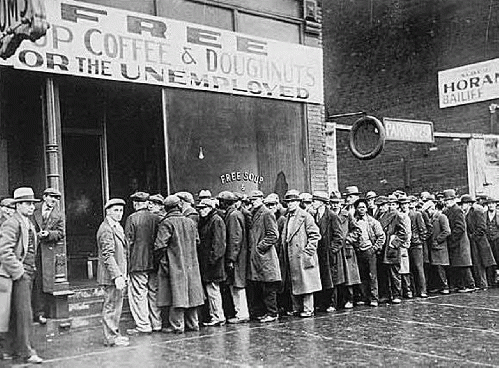This article was originally published at Madison Independent Examiner. A slideshow of graphs and a video is available there.
According to the Bureau of Labor Statistics there were approximately 163,000 private industry jobs created in the U.S. in July, and the unemployment rate is 8.3 percent. Those figures, however, do not accurately depict the reality of the unemployment rate in the U.S. today.
The government's most widely publicized unemployment rate takes into account only those who are collecting unemployment benefits and actively looking for work. It does not take into account those whose unemployment benefits have run out, those who have given up seeking work, or those who are underemployed -- desiring full time work but forced to work part time.
The Bureau of Labor Statistics releases two separate reports, the highly publicized U-3 unemployment rate and a lesser known rate called the U-6. There are, in fact, six different scales of unemployment that are numbered U-1 through U-6. The U-6 rate, however, is the most "liberal," yet accurate gauge of the real unemployment rate in the U.S. because it takes into account not only those receiving unemployment benefits, but also those who are not receiving benefits as well as the underemployed. And the U-6 rate is truly staggering.
According to the Bureau of Labor Statistics, for example, the official U-6 unemployment rate for the state of Wisconsin is 13.3 percent. Nevada's U-6 rate is 22.1 percent, up from just 7.6 percent in 2007. Economically troubled California has a 20.3 percent real rate, while Rhode Island is at 18.3 percent, more than double its 8.3 percent rate in 2007. Only three states, Nebraska, North Dakota and South Dakota have a U-6 rate that is under 10 percent. Even the U-6 rate, however, does not accurately measure the true amount of eligible workers who are out of work.
There is also a factor in the calculations known as "seasonal adjustments." According to Ezra Klein, writing for the Washington Post, as well as Jacob Goldstein writing for Planet Money, if seasonal adjustments are not factored into the equation, the U.S. lost 1.2 million jobs in July rather than gaining 163,000. Klein explains:
The discrepancy"has to do with what's known as "seasonal adjustments." The U.S. economy follows certain predictable patterns in hiring and layoffs every year. School districts always let workers go for the summer and hire in the fall. Retailers always staff up for the Christmas holidays and lay people off afterwards. Students always flood the labor market in June. And this is exactly what BLS does in its monthly jobs reports.... According to the bureau, the economy still had 163,000 more jobs than one would've expected, given seasonal trends. So BLS reported it as a 163,000 gain in jobs.
So, what is the truth? An article published by CNN entitled "The 86 million invisible unemployed" may shed some light -- along with some simple math, which can also be found at whatreallyhappened.com.
The U.S. government officially admits that 8.3 percent of the labor force is "visibly" unemployed. The total US population is approximately 330 million. 24 percent of those, however, are young people not eligible to work and 13 percent are retired. So the total population of available workers in the United States is 100% - (24% + 13%) = 63% of 330 million people, or 208 million workers. Out of the pool of available workers, therefore, 8.3 percent accounts for about 17.3 million people. Together with the 86 million "invisible" that means 103.3 million Americans are available to work but do not have a full time job. And with 103.3 million workers not working or underemployed, the true jobless rate in the U.S. right now is closer to 49 percent, not the 8.3 percent the U.S. government and media is propagandizing about.
That calculation is consistent with a recent survey of income and program participation conducted by the U.S. Census Bureau that shows that well over 100 million Americans are enrolled in at least one welfare program run by the federal government. And that figure does not even include social security and medicare. (See slideshow).
The implications for the U.S. economy should be obvious. Government benefits for the unemployed merely provide enough for families to get by and cover basic living expenses, they leave no room for the type of discretionary spending that keeps businesses thriving in America. The amount of citizens out of work, not contributing revenue and receiving benefits, combined with billions in defense and war spending, bank bailouts, tax breaks for huge corporations that outsource jobs, etc., is simply unsustainable.
Sources:
BLS Local Area Unemployment Statistics
Zerohedge - Full Time vs. Part Time Jobs
(Note: You can view every article as one long page if you sign up as an Advocate Member, or higher).





